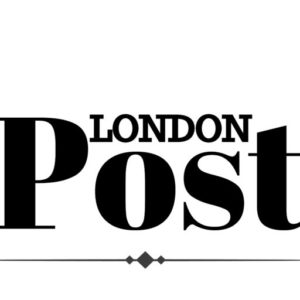The modern workplace is a marvel of efficiency. We fire off emails from 30,000 feet, collaborate on documents in real-time from different continents, and delegate our tedious admin tasks to increasingly clever AI assistants. Our calendars are automated, our meetings are virtual, and our teams are often “in the cloud”, geographically scattered yet digitally tethered.
But amidst this relentless pursuit of productivity, it’s worth pausing to ask a crucial question: are we losing the human touch?
By swapping the staff room for Slack and the boardroom for Zoom, we have certainly streamlined our interactions. But have we also stripped them of their nuance? The convenience of remote work and the power of automation are undeniable, but they come at a cost. That cost is often the small, unscripted, and deeply human moments of connection that build a genuine workplace culture, trust, and rapport.
The Rise of Digital Isolation
Consider a typical day. How many of your interactions are mediated by a screen? We reply to emails with AI-suggested phrases, our customer service queries are first filtered by chatbots, and project updates are delivered by automated software. This efficiency is seductive, but it risks creating a sterile, transactional environment. We are becoming incredibly good at transmitting information but increasingly poor at communicating.
Remote work, while a significant step forward for flexibility, presents a distinct paradox. It’s possible to spend an entire day in back-to-back virtual meetings and still feel profoundly isolated by the evening. We see our colleagues in small, pixelated boxes, but we miss the informal, off-the-cuff cues that build strong professional relationships. We’ve lost the spontaneous “water cooler” conversations, the shared laugh over a bad cup of tea in the kitchen, or the simple “good morning” exchanged when walking through the door.
These small moments, often dismissed as unproductive, are the social glue of any organisation. They are when mentoring happens organically, when stress is diffused by shared camaraderie, and when a colleague’s body language tells you they need support far more clearly than any status update ever could.
Why Tangible Gestures Matter More Than Ever
In a world where emails are deleted in seconds and messages scroll away into a digital void, physical, tangible items have acquired a new kind of power.
When an entire working life is lived through a glowing screen, something as simple as a handwritten note, a physical welcome pack for a new starter, or a thoughtfully chosen thank-you card can have a disproportionate impact. These gestures cut through the digital noise. They are analogue, personal, and, most importantly, they signify effort.
Even something as simple as exchanging physical business cards can feel refreshingly personal in an age of QR codes. It’s a small, tactile ritual that signifies a genuine, one-to-one connection has been made.
This desire to reconnect with the “real” is being recognised by business leaders who understand that employee and client relationships can’t be fully automated.
Paul Bennett, General Manager at the UK-based online printing service Doxzoo, notes this trend: “In an endless stream of digital content, people crave something real. A high-quality, tangible item, whether it’s a beautifully printed report or a personal notebook, creates a lasting impression that a thousand emails simply can’t replicate. It’s about showing you’ve gone the extra mile, and that personal effort still counts for a great deal in business.”
A tangible gesture communicates a level of personal care and specific intent that a mass email or a thumbs-up emoji simply lacks. For remote teams, sending a small parcel with company-branded merchandise or a voucher for a local coffee shop isn’t just a perk; it’s a physical bridge connecting the employee’s home office back to the wider team.
Re-humanising the Digital Workspace
The solution, of course, isn’t to abandon technology. The future isn’t a simple choice between an all-digital world and a return to outdated practices. The challenge is to use these powerful tools with intention—to make them enhance our humanity, not replace it.
So how do we find that balance?
It can be as simple as prioritising a phone call over a complex email chain. It means encouraging “cameras on” during important team meetings, not for surveillance, but to foster genuine presence and engagement. It means scheduling virtual “coffee breaks” with the explicit rule of “no work talk”, purely to allow for that informal human chatter we’re all missing.
When we use AI, we should use it to automate the mundane admin in order to free up more time for personal, high-touch interaction. Let AI draft the report, but you should be the one to add the personal cover note. Let the software schedule the meeting, but make sure you’re the one starting it with a genuine human “how are you?”.
Ultimately, technology is a magnificent tool. It allows for flexibility and scale that would have been unimaginable a generation ago. But it is a poor substitute for authentic human connection. As we continue to build the workplaces of the future, we must be careful not to optimise the humanity out of them. A little inefficiency, a moment of spontaneous chat, a shared laugh, or a simple, tangible gesture might just be the most valuable, productive thing we do all day.








